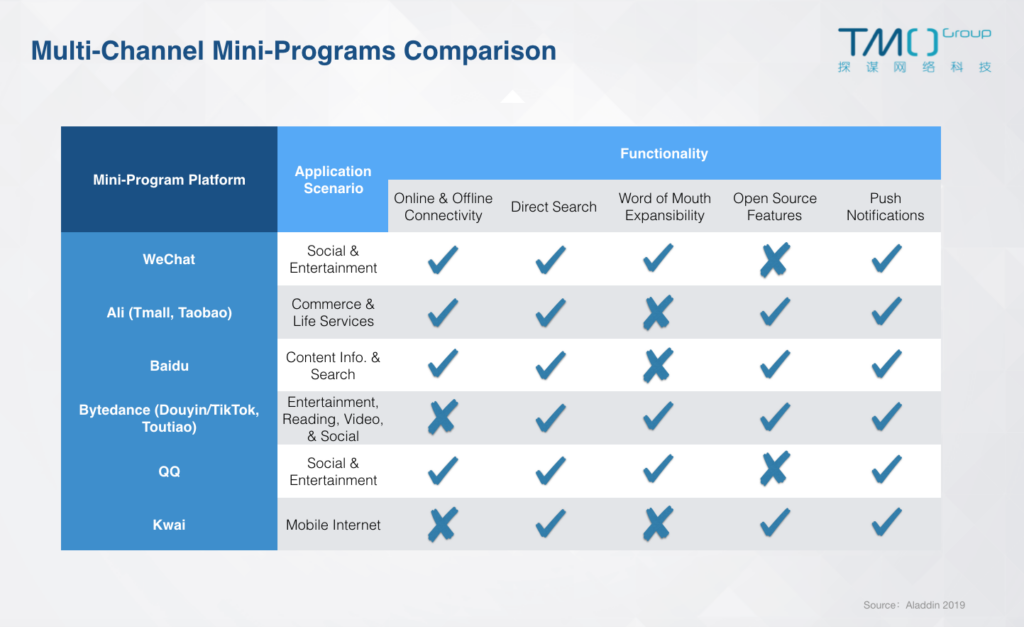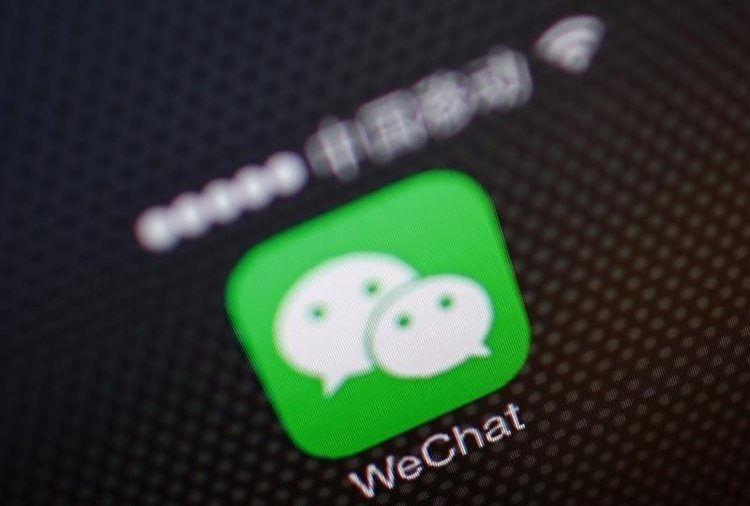New Retail mini-programs (or 'applets') have become the standard among major retail brands. Official reports from WeChat say that in 2018, retail Mini-Programs served users 200 million times. The same year, more than 1500 online supermarkets were launched. According to statistics published by Aladdin, retail Mini-Programs account for 21% of the top 200. As they reach maturity, there are some New Retail Mini-Program features that have become essential and indeed expected.
Essential Features for Mini-Programs in the New Retail Era
Barcode-enabled Shopping
Many brands now offer self-service shopping through code scanning on mobile devices. Customers can take a product they come across in a physical store, scan its barcode using the store's Mini-Program, and purchase it right there without needing to take it to a cashier or a self-service machine.
However, customers must ensure that they selected the correct branch of the store in the app when making their purchase, or else they will have bought a product in a different store, and cannot walk out with the one they're holding in the store they're actually in!
This problem can be neatly sidestepped by inviting users to scan a store-specific QR code when they enter the branch, or automatically directing users to the correct store within the Mini-Program via their phone's real-time location.
Scanning and self-checkout functionality (left), and the Walmart Mini-Program (center and right). Walmart uses a shopper's real-time location to direct them to the correct in-applet storefront, ensuring they are buying the products they pick up there.
Automatic Address Acquisition
For brands that operate chain-stores with multiple branches, it is essential to add real-time positioning functionality. This allows a brand's Mini-Program to request the user's location information and then automatically direct them to their nearest store. Then, when they browse on the Mini-Program, the product inventory will be relevant and up-to-date for where they're shopping from. Additionally, it's important to allow users to manually change or choose their location - for example, in case they are shopping for home while out-and-about in another part of town.
For users who visit a branch in person to pick up their goods, it is imperative to ask the user to confirm their choice of branch before payment is completed. Similarly, for those users opting to have goods delivered to their homes, it is important to re-confirm whether their home address is within the delivery range of the store they selected before payment is completed.
You may enjoy our articles on New Retail in Chinese eCommerce: Fixed Inventory ModelWe profile one of the two leading inventory models that has arisen in the innovative logistics environment of the New Retail era.Fixed Inventory and New Retail era in Chinese eCommerce: Mixed Inventory ModelOne of the models shaping China's New Retail Era, the mixed inventory model presents numerous opportunities for optimized customer experience.Mixed Inventory models for New Retail logistics.
Wallmart's Mini-Program asks for a user's location (left), Uniqlo's Mini-Program suggests stores based on the user's real-time location (center), and ALDI's Mini-Program enables a user to manually enter their address.
Delayed Login
For new users, the priority is browsing and experiencing the store. Allowing them to freely do so uninterrupted helps warm them up to the platform, increasing their interest in making a purchase. Therefore, many brands are moving the login step until after a user adds a product to their cart or clicks on the account page link. This means new users can browse without worrying about setting up or logging into an account until they're actively interested in making a specific purchase.
As an example, Baidu's official data shows that Suning's Baidu Mini-Program saw an approximate 110% increase in login rate after delaying its login step in this manner.
Suning's Baidu Mini-Program front page (left), product page (center) and subsequent login prompt (right)
Banners and Pop-Up Windows
This is also a function that any eCommerce app or Mini-Program should have in general. Brands can use sliding banners and pop-ups that overlay on top of the main interface to suggest or advertise products, provide coupons or vouchers, and facilitate check-out and cart functionality. Up-selling using such features has proven particularly successful on a number of platforms.
Watsons's Mini-Program pushes the latest discounts to first-time users (left), while MacDonalds's Mini-Program offers suggestions to users completing their purchase (right)
Template Messages and Status Tips
Granting the user peace of mind regarding the status of their order is essential. Therefore, brands can integrate template messages to inform users of order updates. Updates such as order acceptance, product shipment, courier receipt, and arrival at store pick-up points or their home can be highly reassuring to users. Especially those who are a little concerned about delivery times. Or those who just can't wait to get their hands on their order!
After an order is completed with the KFC Mini-Program, a template message is sent via WeChat to give the user the order code they'll need for collection.
Product Customization
A basic function in the mind of many consumers, and so one that is fast-becoming one of the most essential New Retail Mini-Program features for many businesses. Users expect to be able to customize their purchase when they might be able to in offline equivalents.
KFC's (left) and MacDonalds's (right) Mini-Programs allow users to customize bundled 'meal' orders as to which sides and drinks they would like to receive
Social Shopping
Mini-Programs provide fertile soil for social eCommerce. They can offer relevant functionality like sharing discounts or vouchers with friends, or inviting friends to group-buy deals.
Chinese fruit & veg retailer BaiGuoyuan has made great use of such techniques to raise the profile of its brand. According to data from 36kr, over 40% of the retailer's 45 million registered customers use their Mini-Program. Pushing group-buying as a business model has proven to be a shortcut to user growth for the company. As users identify desired products or deals, they then reach out to friends and acquaintances. These next-step consumers go on to do the same, quickly expanding the service's user-base.
BaiGuoYuan's social shopping Mini-Program (left) enables users to select a time and branch for offline pickup (right)
Multi-Channel New Retail a Possible Future Trend
The number of platforms offering their own Mini-Programs has exploded from just two in mid-2018 to nine this year. Leading apps such as Toutiao, Douyin (TikTok), Alipay, and Baidu have all got in on the act. Additionally, we have seen some brands pioneer the concept of multi-channel Mini-Programs, such as Suning and Xiaomi. TMO believes this may represent an important future direction for New Retail.
New Retail Mini-Program Traffic
Analysis and Comparison of Multi-Channel Mini-Programs
Below is a comparison of the advantages and disadvantages of Mini-Programs from different major platforms. Among these, WeChat and Alipay's Mini-Programs provide the best integration with offline scenarios. This is because both are online payment services. Meanwhile, Douyin (TikTok) has an advantage when it comes to short video content and KOL cross-promotion. Baidu's Mini-Program offerings remain fairly limited for now. They only really apply to promotions and advertising to those already using the Baidu app for searches. Therefore its eCommerce New Retail footprint is negligible.
Multi-channel Mini-Program platform comparisons
Is your brand looking to explore New Retail and multi-channel Mini-Programs? Get in touch with TMO for your one-stop New Retail Mini-Program solution!
Disclaimer: all pictures in this article are sourced from copyright-free platforms. If however you believe that infringement has occurred despite this, please contact us and we will remove the offending image immediately.





















